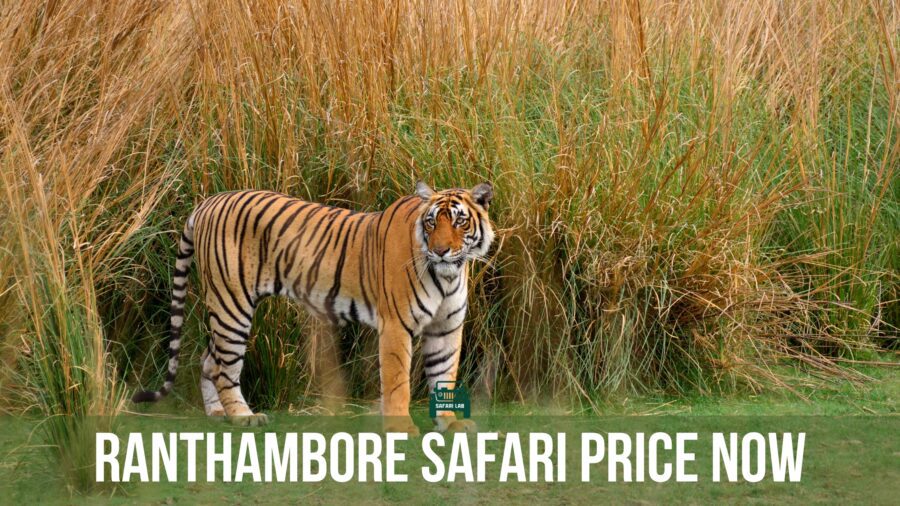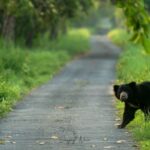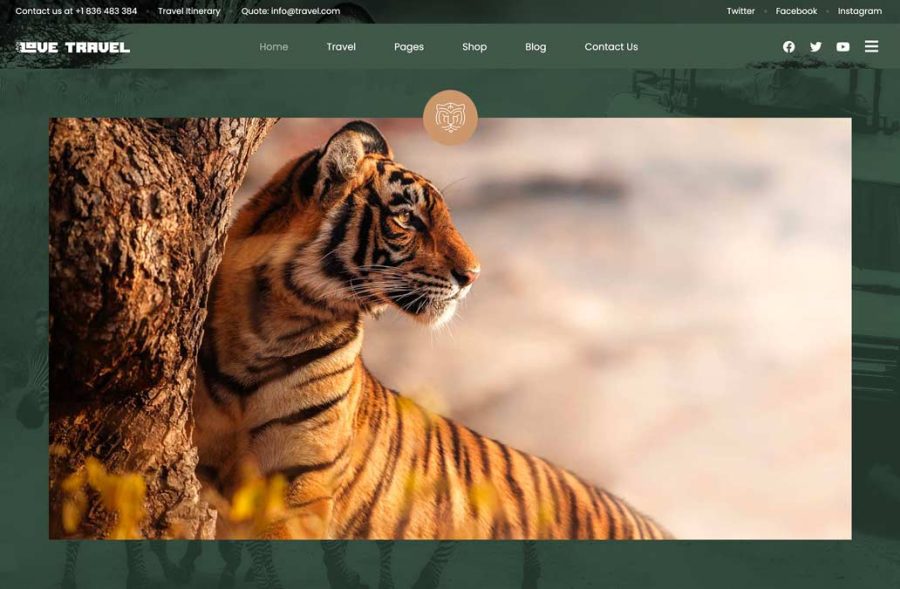Ranthambore National Park, located in Rajasthan’s Sawai Madhopur district, is one of India’s most popular destinations for tiger safaris and wildlife photography. Known for its rich biodiversity and unique terrain, it offers visitors the chance to witness Bengal tigers, leopards, sloth bears, and a plethora of bird species. If you’re considering a visit, understanding the Ranthambore safari price, zone options, booking methods, and accommodation choices will be crucial to planning a memorable and hassle-free adventure. For those who miss advance booking, a limited number of Tatkal or last-minute tickets are available seven days before the safari date. Tatkal tickets are only valid for Zones 1-6 and are priced slightly higher than standard bookings.
Given that the demand for safari tickets often exceeds the availability, especially in the core zones, it’s advisable to book your tickets as early as possible, ideally 45-60 days in advance during peak tourist seasons, which include winter (October to February) and the dry summer months of April to June
For those who miss advance booking, a limited number of Tatkal or last-minute tickets are available seven days before the safari date. Tatkal tickets are only valid for Zones 1-6 and are priced slightly higher than standard bookings.
Given that the demand for safari tickets often exceeds the availability, especially in the core zones, it’s advisable to book your tickets as early as possible, ideally 45-60 days in advance during peak tourist seasons, which include winter (October to February) and the dry summer months of April to June
Jump To
ToggleWhat is Ranthambore National Park?
Spanning roughly 1,334 square kilometers, Ranthambore National Park is a diverse sanctuary teeming with wildlife and history. It is known not only for its high concentration of Bengal tigers but also for its scenic beauty. The park is dotted with ancient structures, including the historic Ranthambore Fort, a UNESCO World Heritage Site that sits atop a hill and offers panoramic views of the surrounding wilderness. Several lakes, such as Padam Talao and Raj Bagh Lake, add to the park’s allure, attracting both wildlife and photographers eager to capture the serenity of these natural water bodies. Ranthambore’s history as a hunting ground for Rajasthan’s royals adds a layer of cultural intrigue, making it a rich experience for travelers who appreciate both wildlife and heritage The park’s landscapes vary significantly, from rugged cliffs and open meadows to dense forested areas dominated by the hardy Dhok tree. This diversity of habitats supports not only tigers but also other predators like leopards, sloth bears, and hyenas, along with prey animals such as chital, sambar, and nilgai. With an estimated 80-90 tigers spread across its zones, Ranthambore provides one of the best chances in India to see these majestic animals in the wild. Once home to iconic tigers like Machhli, the park still has a global appeal.How to Reach Ranthambore
Reaching Ranthambore is relatively convenient, with multiple options available for air, rail, and road travel. The nearest airport is located in Jaipur, about 180 kilometers from Ranthambore, with frequent flights from major Indian cities such as Delhi, Mumbai, and Bangalore. From Jaipur, you can hire a taxi or take a bus to Sawai Madhopur, the closest town to the park. Sawai Madhopur is well-connected by rail and has a railway station serviced by express trains from Delhi, Mumbai, Jaipur, and other key cities. For those traveling by road, Sawai Madhopur is easily accessible by car or bus from Jaipur, Delhi (around 400 km), and other nearby cities. Many tour operators also offer complete travel packages that include transport to Ranthambore, making it easier to manage all aspects of the journeyRanthambore Safari Price and Booking Options
When planning a visit, understanding the Ranthambore safari price is key, as prices vary based on safari type, timing, and visitor nationality. Ranthambore offers two types of safaris: Jeep and Canter. A Jeep Safari provides a more personal and intimate experience, accommodating up to six people, while a Canter Safari, seating up to 20, is a budget-friendly option for larger groups. The prices for the Jeep Safari are currently set at ₹1,397 per person for Indian tourists and ₹2,467 for foreign tourists. Canter Safari tickets are priced lower at ₹810 per person for Indian tourists and ₹1,965 for foreign tourists. Both prices are exclusive of GST and additional service charges, which vary by season. For those who miss advance booking, a limited number of Tatkal or last-minute tickets are available seven days before the safari date. Tatkal tickets are only valid for Zones 1-6 and are priced slightly higher than standard bookings.
Given that the demand for safari tickets often exceeds the availability, especially in the core zones, it’s advisable to book your tickets as early as possible, ideally 45-60 days in advance during peak tourist seasons, which include winter (October to February) and the dry summer months of April to June
For those who miss advance booking, a limited number of Tatkal or last-minute tickets are available seven days before the safari date. Tatkal tickets are only valid for Zones 1-6 and are priced slightly higher than standard bookings.
Given that the demand for safari tickets often exceeds the availability, especially in the core zones, it’s advisable to book your tickets as early as possible, ideally 45-60 days in advance during peak tourist seasons, which include winter (October to February) and the dry summer months of April to JuneRanthambore Resorts: Top Accommodation Choices Near the Park
Staying near the park enhances the safari experience, making it easier to access early morning and late afternoon safari shifts. Ranthambore has a variety of accommodation options, from luxurious lodges to budget-friendly resorts. Sujan Sher Bagh and Aman-i-Khás are two of the most luxurious resorts near Ranthambore, offering high-end amenities, private tented accommodations, and personalized safari services. For a mid-range stay, The Tigress Resort & Spa and Ranthambore Regency provide comfortable accommodations with excellent proximity to the park and guided safari services. For budget travellers, options like Tiger Safari Resort and Ranthambore Bagh offer simple, cozy rooms and an authentic jungle atmosphere at affordable rates. Many of these resorts also provide in-house naturalists and guides who can offer insights into Ranthambore’s wildlife and prepare you for a rewarding safariWhich Are the Best Zones in Ranthambore?
Ranthambore is divided into ten safari zones, each offering a unique landscape and varying wildlife experiences. Zones 1-5 are designated as core zones, known for higher tiger density and more frequent sightings, while Zones 6-10 are buffer zones.- Zone 1 is known for its dense forest and rocky terrain, with frequent sightings of Arrowhead (T-84), Riddhi (T-184) and other tigers. This zone has a more secluded feel, ideal for spotting elusive predators like leopards as well.
- Zone 2 is popular for its waterholes and hilly areas, where tigers like Krishna (T-19) and her cubs are often spotted. It is also home to T-120 (Yodha) The zone’s varied topography attracts diverse wildlife, from tigers to sloth bears and sambar deer.
- Zone 3 includes Padam Talao and Raj Bagh Lake, making it one of the most scenic zones with high chances of tiger sightings. The zone’s open spaces and water sources attract a wide range of wildlife, including crocodiles and large flocks of birds.
- Zone 4 is known for the Malik Talao water body, which draws numerous species, especially during warmer months. Tigers and leopards are frequently seen here, particularly around dawn and dusk when they visit the waterholes.
- Zone 5 is another core area with rugged landscapes that are well-suited for tigers like T-73 and her cubs. Photographers favor this zone due to the mix of forested areas and open spaces, making it easier to spot and photograph wildlife.



























